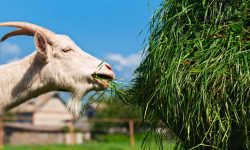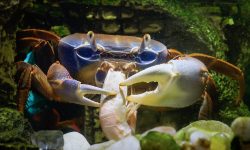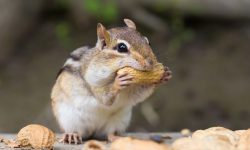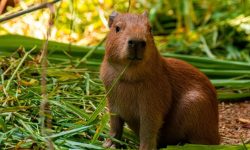Earthworms are some of the most important creatures living beneath our feet. Though they might seem simple, these small invertebrates play a massive role in keeping our soil fertile and healthy. But what exactly do earthworms eat, and how do they get their nutrition while living underground?
Earthworms are detritivores, meaning they feed primarily on decomposing organic matter — dead leaves, roots, fruits, and microorganisms that accumulate in the soil. Their diet helps recycle nutrients back into the earth, improving soil structure and supporting plant growth.
In this article, we’ll explore 20 foods earthworms love the most, showing how their eating habits sustain ecosystems, benefit farmers and gardeners, and reveal why worms are nature’s ultimate recyclers.
Understanding the Earthworm Diet
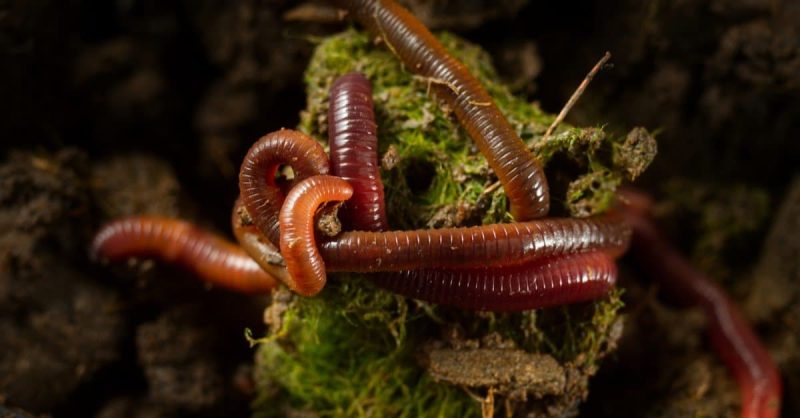
How Earthworms Eat
Earthworms don’t have teeth. Instead, they use a muscular organ called the gizzard to grind food. Before reaching the gizzard, food is moistened in the crop and mixed with soil particles that help break it down.
They rely on microorganisms and natural enzymes to digest decaying organic matter, turning it into nutrient-rich worm castings — one of the best natural fertilizers on Earth.
Where They Find Food
Earthworms feed in the top layers of soil, usually within the upper 6 to 8 inches where organic matter is most concentrated. They consume anything biodegradable — plant debris, compost, or decaying roots — depending on the ecosystem they live in.
Rain, moisture, and soil texture all influence where earthworms find food. After rainfall, they often come to the surface to feast on fresh organic residues.
Why Their Diet Matters
An earthworm’s diet doesn’t just keep it alive — it also enriches the environment. The organic materials they process become humus, improving soil aeration and fertility. Their activity helps retain moisture and promotes the growth of beneficial microbes.
Essentially, what earthworms eat determines how healthy and productive the soil becomes.
20 Foods Earthworms Love the Most
1. Dead Leaves
Dead leaves are one of the primary foods for earthworms. As leaves decompose, they soften and become easier to digest.
Earthworms pull leaf fragments into their burrows, mixing them with soil and bacteria. This process accelerates decomposition and nutrient recycling.
The decayed matter from leaves provides both carbon and energy, forming the foundation of an earthworm’s diet in forests and gardens.
2. Decaying Grass
Grass clippings are a favorite food source for earthworms, especially in lawns and compost piles. As they rot, the grass releases moisture and nutrients that worms can easily absorb.
Fresh grass clippings should be aged slightly before being eaten, as decomposed grass is softer and less acidic.
This food supports rapid growth and reproduction, making grass residue ideal for worm-rich soils.
3. Fruits (Decaying or Overripe)
Earthworms enjoy soft, decomposing fruits like bananas, melons, apples, and berries. The sugars and natural acids provide energy and attract beneficial microbes that aid digestion.
Worms cannot handle fresh, hard fruit as easily, so they prefer overripe or partially decayed ones.
Adding fruit scraps to compost bins helps feed worms naturally while improving the compost’s nutrient balance.
4. Vegetables (Soft and Decomposing)
Vegetable scraps such as lettuce, cucumbers, and carrots are excellent worm food when allowed to soften. They contain water, fiber, and trace minerals that worms need for survival.
Avoid acidic vegetables like onions and garlic, which can irritate worms’ sensitive skin.
In compost systems, vegetables provide a steady supply of nutrients that help worms thrive year-round.
5. Coffee Grounds
Coffee grounds are a favorite among composting worms because of their texture and nutrient profile. They’re rich in nitrogen, helping balance the carbon-rich materials like leaves.
Worms consume coffee grounds mixed with other organic matter rather than pure grounds alone, which can be too acidic.
Used coffee filters are also safe — they break down naturally and add fiber to the worm’s diet.
6. Tea Leaves and Bags
Tea leaves, especially when left inside biodegradable tea bags, are soft and nutrient-rich. They provide minerals like potassium and calcium, supporting worm health.
As the tea breaks down, it encourages microbial growth that worms feed on.
Make sure tea bags don’t contain plastic mesh — only natural fiber bags are safe for earthworms.
7. Eggshells (Crushed)
While worms don’t eat eggshells directly, crushed shells provide calcium that aids in reproduction and neutralizes acidity in the soil.
Worms benefit indirectly from eggshells as they help maintain pH balance in compost.
Powdered eggshells also improve soil texture, promoting better movement and oxygen flow for burrowing worms.
8. Paper and Cardboard
Earthworms can digest plain paper and cardboard, especially when shredded and moistened. These materials are carbon-rich and mimic natural leaf litter.
They serve as both bedding and food for composting worms.
Avoid glossy or ink-covered paper, as chemicals can harm worms. Brown cardboard and newspaper are the safest choices.
9. Decaying Roots
As plant roots die and decompose underground, earthworms feed on the soft tissues and attached microorganisms.
Roots are rich in organic carbon and trace nutrients, supporting worm health.
In agricultural soils, earthworms naturally consume root residues, breaking them down into fertile humus.
10. Compost
Compost is the perfect all-in-one food source for worms. It’s moist, balanced in carbon and nitrogen, and filled with bacteria that make digestion easier.
Worms thrive in compost piles because the temperature and microbial activity create an ideal feeding environment.
Compost also helps worms multiply quickly, enriching soil fertility as they produce nutrient-rich castings.
11. Decaying Flowers
Old or wilted flowers become soft and easy for worms to eat once they start to decompose. Petals contain trace nutrients and moisture that attract earthworms.
Flowers like roses, daisies, and marigolds add organic diversity to the worm diet.
They should be pesticide-free to avoid harming the worm population.
12. Soil Microorganisms
Earthworms indirectly consume bacteria, fungi, and protozoa found in decaying matter. These microorganisms make up a large part of what they digest daily.
They not only provide protein and essential nutrients but also help break down tough organic material.
This symbiotic relationship between worms and microbes keeps the soil ecosystem healthy and self-sustaining.
13. Manure
Animal manure, particularly from cows, horses, and rabbits, is one of the richest worm foods. It’s pre-digested plant material loaded with organic matter and microbes.
Worms break down manure further, producing dark, crumbly worm castings that are prized as organic fertilizer.
In vermicomposting systems, aged manure helps grow strong, active worm populations.
14. Cornmeal and Oats
Cornmeal, oats, and similar grains are excellent worm supplements in controlled compost bins. They’re easy to digest and provide carbohydrates for energy.
Sprinkling a small amount on the surface of bedding encourages healthy feeding activity.
These grains should be given in moderation to avoid mold growth.
15. Bread Crumbs (Occasionally)
Small bits of stale or moldy bread are acceptable for worms if mixed with other organic waste. Bread offers carbohydrates but should not form a large part of their diet.
Too much bread can ferment and create an acidic environment.
Used sparingly, it adds texture and variety to their feeding material.
16. Leaf Mold
Leaf mold, which forms when leaves naturally decompose over time, is an earthworm delicacy. It’s soft, microbe-rich, and perfectly balanced in carbon and nitrogen.
Worms flourish in leaf mold piles, burrowing through the rich material to feed continuously.
Gardeners often use leaf mold as worm bedding and food due to its ideal texture and nutrient content.
17. Melon Rinds
Rinds from watermelon, cantaloupe, or honeydew are irresistible to worms. They’re high in water content and sugar, attracting microbes that pre-digest the material.
Worms feed on the softened flesh and microbial film on the rind’s surface.
For composting, melon rinds speed up worm reproduction due to their sweetness and moisture.
18. Avocado and Banana Peels
Worms enjoy soft, decomposing peels, which are rich in potassium and magnesium. These nutrients aid growth and energy production.
Banana peels decompose quickly and are an excellent choice for composting worms.
Avoid feeding too many avocado peels at once, as they break down slowly and can become greasy.
19. Corn Husks and Vegetable Stalks
Once softened, corn husks and veggie stalks become digestible for worms. They provide fiber and cellulose that promote digestive movement.
These fibrous materials take longer to break down but keep the compost aerated.
They mimic natural plant debris found in garden soils, offering a familiar texture for feeding.
20. Natural Soil and Organic Matter
Even ordinary soil serves as food for earthworms because it contains organic debris and microorganisms.
They ingest soil particles to help grind other food inside their gizzards, obtaining trace nutrients in the process.
This natural feeding behavior helps enrich the topsoil layer, turning it into fertile ground for plants.
Frequently Asked Questions (FAQs)
Do earthworms eat fresh food?
No. Earthworms prefer decaying or partially decomposed organic matter since it’s softer and easier to digest.
Can earthworms eat meat or dairy?
No. Meat and dairy produce odors and attract pests. They’re not suitable for worms and can harm compost systems.
How often do earthworms eat?
Earthworms eat continuously. In ideal conditions, they can consume food equal to their body weight each day.
Do earthworms drink water?
Worms absorb moisture through their skin, so they need a damp environment but not standing water.
What foods should be avoided?
Avoid citrus, spicy foods, onions, garlic, and anything oily or salty — these can irritate or harm worms.
Conclusion
Earthworms are quiet heroes of the soil, tirelessly eating, digesting, and enriching the ground beneath us. From decaying leaves and fruits to compost and manure, their diet turns waste into life — transforming the earth into fertile, living soil.
Their feeding habits sustain ecosystems, aid agriculture, and remind us how interconnected life beneath the surface truly is. By understanding what earthworms eat, we not only learn about their survival but also about the balance of nature itself — one mouthful of soil at a time.
Meta Description (128 characters):
Discover what earthworms eat and the 20 foods they love most. Learn how their diet enriches soil and supports a healthy ecosystem.

